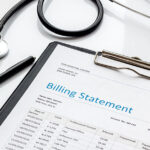
If you’re in the healthcare industry, you have some patients who owe you money but no longer come to see you. This isn’t necessarily because they don’t need your services anymore—it’s more likely that they just don’t have the money to pay you, and even if they did, they might not pay anything on principle. Patient collections management can be difficult, but these strategies will help you get back some of what your practice is owed without pushing patients away or causing bad blood between your practice and patients.
Providing More Options
The first step in improving collections is to look at your overall practice’s patient policy and make sure that it gives you room to get creative. You want to consider a few factors: providing discounts or payment plans, offering to finance, and sometimes even accepting just a credit card. You’ll have to be more flexible with your options than those who aren’t concerned about maximizing revenues, but it could be a worthwhile tradeoff if that means collecting on past-due balances. You’ll also want to keep an eye out for out-of-network and uninsured patients—they may not be able to pay upfront but can be provided with discounts when paying with cash or check.
Setting a Standard Payment Policy
Many doctors choose to set a standard policy for their office. That way, there’s no question about when and how payments are expected or what that payment is likely to be. This can help decrease collections issues because it gives patients one less reason to say no when you come asking for money after services have been provided. It also encourages some patients to pay upfront to avoid having any portion of their bills left unpaid by insurance. The easiest way to create a standardized patient billing policy is by creating your work order form and ensuring that you include it with their co-pay or deductible payment at checkout every time a patient sees a provider in your office.
Persistent but Not Annoying Reminders
Two things that will encourage your patients to pay their bills on time are persistence and personalization. Persistent reminders, but not annoying ones, can make all of the difference in your collections efforts. By nature, human beings procrastinate – particularly when it comes to unpleasant tasks like paying medical bills. But while nobody wants to be reminded again and again that they owe you money, persistent reminders in an unobtrusive format often get better results than one big pestering phone call or collection letter. It’s also a good idea to keep your communications as personal as possible by remembering what kind of person your patient is, where they’re from and how you interacted with them before (for example: did they have a difficult time navigating payment option over email?).
Communication
Communication is key to avoiding patient collection issues, so consider ways you can keep lines of communication open with your patients and establish payment plans ahead of time, so they’re not surprised by costs once they leave treatment.
Online Patient Portals
By allowing patients to check lab results, request prescriptions, and pay bills online, you create an environment that fosters better communication. And just like that, patients become more engaged in their health and treatment — which will also help them remember to pay their bills! Making your online portal convenient and seamless will prompt them to do so.

If you’re in the healthcare industry, you have some patients who owe you money but no longer come to see you. This isn’t necessarily because they don’t need your services anymore—it’s more likely that they just don’t have the money to pay you, and even if they did, they might not pay anything on principle. Patient collections management can be difficult, but these strategies will help you get back some of what your practice is owed without pushing patients away or causing bad blood between your practice and patients.
Providing More Options
The first step in improving collections is to look at your overall practice’s patient policy and make sure that it gives you room to get creative. You want to consider a few factors: providing discounts or payment plans, offering to finance, and sometimes even accepting just a credit card. You’ll have to be more flexible with your options than those who aren’t concerned about maximizing revenues, but it could be a worthwhile tradeoff if that means collecting on past-due balances. You’ll also want to keep an eye out for out-of-network and uninsured patients—they may not be able to pay upfront but can be provided with discounts when paying with cash or check.
Setting a Standard Payment Policy
Many doctors choose to set a standard policy for their office. That way, there’s no question about when and how payments are expected or what that payment is likely to be. This can help decrease collections issues because it gives patients one less reason to say no when you come asking for money after services have been provided. It also encourages some patients to pay upfront to avoid having any portion of their bills left unpaid by insurance. The easiest way to create a standardized patient billing policy is by creating your work order form and ensuring that you include it with their co-pay or deductible payment at checkout every time a patient sees a provider in your office.
Persistent but Not Annoying Reminders
Two things that will encourage your patients to pay their bills on time are persistence and personalization. Persistent reminders, but not annoying ones, can make all of the difference in your collections efforts. By nature, human beings procrastinate – particularly when it comes to unpleasant tasks like paying medical bills. But while nobody wants to be reminded again and again that they owe you money, persistent reminders in an unobtrusive format often get better results than one big pestering phone call or collection letter. It’s also a good idea to keep your communications as personal as possible by remembering what kind of person your patient is, where they’re from and how you interacted with them before (for example: did they have a difficult time navigating payment option over email?).
Communication
Communication is key to avoiding patient collection issues, so consider ways you can keep lines of communication open with your patients and establish payment plans ahead of time, so they’re not surprised by costs once they leave treatment.
Online Patient Portals
By allowing patients to check lab results, request prescriptions, and pay bills online, you create an environment that fosters better communication. And just like that, patients become more engaged in their health and treatment — which will also help them remember to pay their bills! Making your online portal convenient and seamless will prompt them to do so.




Recent Comments